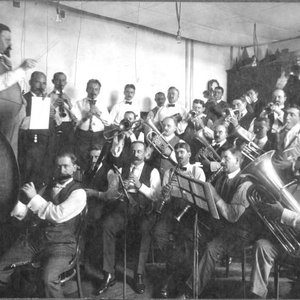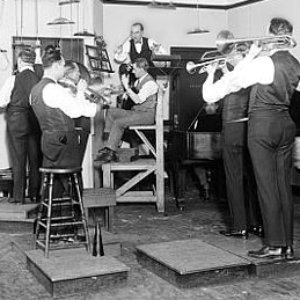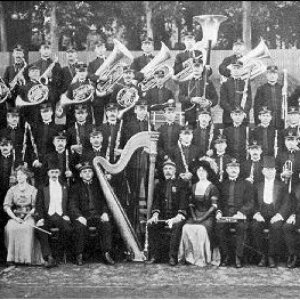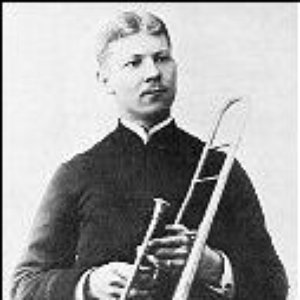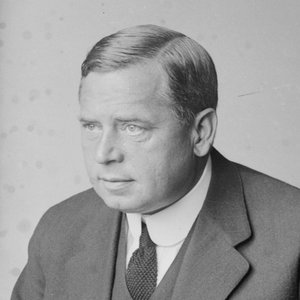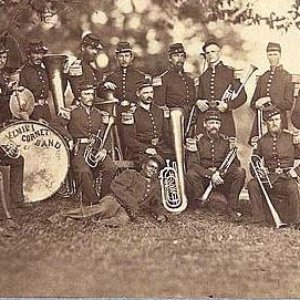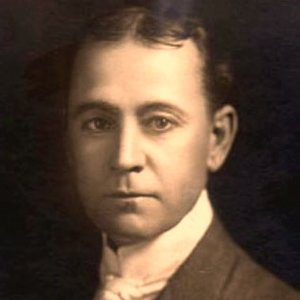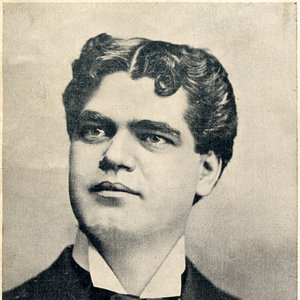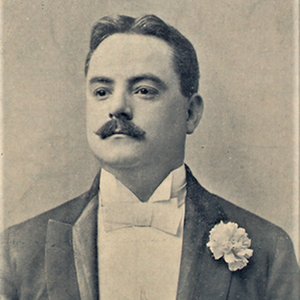Biography
Patrick Sarsfield Gilmore was born on December 25, 1829 in Ballygar, County Galway, Ireland.
After accompanying his father to a protest rally against the British rule in Athlone, Ireland as a member of the Ballygar Fife and Drum Band. It was at the rally that Gilmore became enamored with the disciplined band. As a young man he moved to Athlone where he became a member of the local bands. He was introduced to the great bandleader, Patrick Keating, who taught him classical music and trumpets. Flourishing as a musician, Gilmore left Ireland for Boston in 1848.
In America, Gilmore became a member of a local band in Boston. He became the leader of the Boston Brigade Band and then the Charlestown Band. He became famous as a cornet soloist and joined the Salem Brigade Band in 1853, which at the time was regarded as the best in America. With the Salem band, Gilmore performed for the inauguration of President James Buchanan. He married Ellen O’Neill in 1858 and the next year returned to Boston.
Reorganizing the Boston Brigade Band in 1858, Gilmore founded Patrick Gilmore’s Band, which featured 2 woodwinds to each brass instrument. The ensemble was the model for what would become the modern concert band. April 9, 1859 was the date of the first performance by the Gilmore Band.
Over the course of his life, Gilmore wrote several marches songs (often under the pseudonym Louis Lambert) including “Good News From Home”, “We Are Coming Father Abraham”, “Seeing Nellie Home”, 22nd Regiment March”, “Sad News From Home”, “The Everlasting Polka”, “Music Fills My Soul With Sadness” and the definitive performance of Henry C. Work’s “God Save the Nation”. However it was after the Battle of Gettysburg that Gilmore’s biggest hit was written: “When Johnny Comes Marching Home”.
In 1861, Gilmore’s Band enlisted in the Union Army and in 1863, Gilmore was put in charge of training bands in Massachusetts, an honor bestowed upon him by Governor Andrews of Massachusetts. Gilmore would train, equip and send out 20 bands from Massachusetts. After his own service was completed, and the War came to a close, Gilmore was asked by President Lincoln to organize and perform a celebration in New Orleans. After the success of the performance, which included the use of a cannon for the first time, Gilmore received a letter of thanks from the President.
Inspired by the success of the New Orleans event, Gilmore organized a peace festival to celebrate the end of the war. Doubling the numbers of musicians and singers from the New Orleans affair (from 500 to 1,000 and 5,000 to 10,000 respectfully), Gilmore’s National Peace Festival was held in Cooley Square on the Boston Common in 1869. The festival was the biggest social event of the century in Boston and was even attended by President Grant and his cabinet.
In 1872, Gilmore traveled to Europe with his band. Making contact with European bands, Gilmore came back to the United States with the grandiose idea of a World Peace Jubilee, which was held in Boston in 1872. Although a financial failure, the Jubilee solidified Gilmore as a national musical figure and premiere bandmaster of the time.
In the late 1870’s, Gilmore created Gilmore’s Concert Garden (the first Madison Square Garden) in New York. He was also the bandleader for many national celebrations including the July 4th Centennial in Philadelphia (1876), opening of the amusement park on Manhattan Beach in 1979 and the Dedication of the Statue of Liberty in 1886.
Gilmore joined the 22nd Regiment Band in New York in the early 1880’s. With this band, Gilmore started the tradition of gathering in Times Square at midnight on December 31 to celebrate the New Year. The tradition began in 1888. Gilmore and the Regiment Band would go to Times Square and at midnight, Gilmore would fire two pistols in the air to usher in the New Year.
Gilmore continued touring the nation with the 22nd until his death in 1892 from a heart attack. He was buried in Old Calvary Cemetery in New York. On the night of his funeral, a young bandleader named John Philip Sousa dedicated his performance in memory of the late Patrick S. Gilmore - in Sousa’s reference, “The Father Of the American Band”.
Artist descriptions on Last.fm are editable by everyone. Feel free to contribute!
All user-contributed text on this page is available under the Creative Commons Attribution-ShareAlike License; additional terms may apply.

